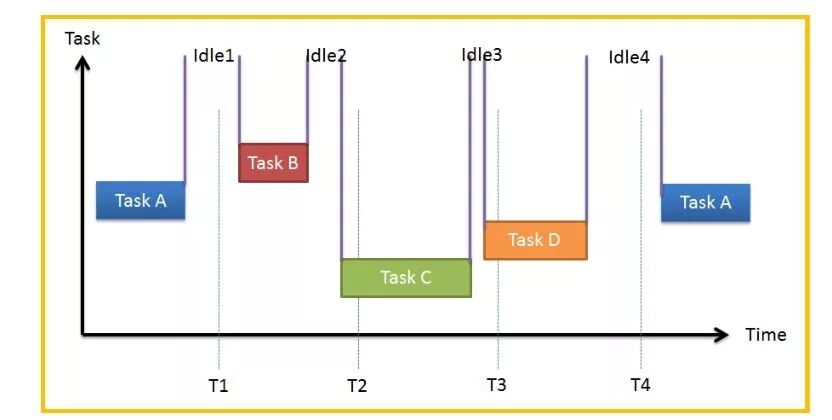Follow andstar our public account to not miss exciting content

Readers have been asking various questions about RTOS, such as: Should I learn RTOS now? What are the benefits of learning RTOS? Should my project run on RTOS? …and other questions regarding RTOS. Ultimately, it boils down to your insufficient understanding of RTOS and lack of project development experience. For those friends, today I will share several relevant points: In embedded systems, there are many ways to implement task scheduling. In small systems with limited functionality, an infinite loop is sufficient to achieve system functionality. When software design becomes large and complex, designers should consider using a real-time operating system (RTOS).

Here are 8 reasons to use RTOS:
1. Hard Real-Time Response
RTOS based on priority preemption executes priority scheduling according to the real-time requirements of tasks. Tasks with strict timing constraints can be executed first, improving the application’s response to time-critical events.
2. Maximizing System Performance
For large and complex embedded applications, using an event-driven RTOS instead of a polling-based super loop structure can create a more efficient design with smaller memory usage, allowing applications to gain more processor time.
3. Reducing Complexity
RTOS allows applications to be divided into small, independently running tasks. Each task executes in its own context, without relying on other tasks or the scheduler.
4. Peak Load Management
RTOS provides an effective method for managing peak system activity. Higher priority is assigned to tasks executing peak load activities, ensuring they access the processor during critical times, while lower priority tasks are delayed.
5. Tightly Integrated Middleware
The modular design of RTOS makes it easy to add middleware. Middleware components are added in a task and driver manner. They communicate with other tasks using resources provided by RTOS. RTOS schedules them based on corresponding events.
6. Larger Development Teams
Each task can be considered a project. Input and output are defined using resources provided by RTOS (queues, semaphores, etc.). Defining the system as individual tasks makes it easier to deploy more developers to a project.
7. Easier Debugging and Verification
The system is divided into clearly defined tasks that do not depend on other tasks. Each task can be easily debugged and verified before the entire system integration.
8. Code Reusability
The modular design in RTOS encourages creating software functions as independent, verified tasks. Their independence makes it easy to reuse these modules in other designs.
Of course, the above reasons cater to general needs; if your project has special requirements, it may be different. (Some content from: Micron Technology)
‧‧‧‧‧‧‧‧‧‧‧‧‧‧‧ END ‧‧‧‧‧‧‧‧‧‧‧‧‧‧‧
Recommended Reading:
Networking Technologies in the Internet of Things
Knowledge You Didn’t Know About ARM and Thumb Instruction Sets
Follow the public account ‘strongerHuang’, reply ‘1024’ in the background to see more exciting content, or reply ‘join group’ to join Huang’s technical exchange group.

Long press to recognize the QR code in the image to follow